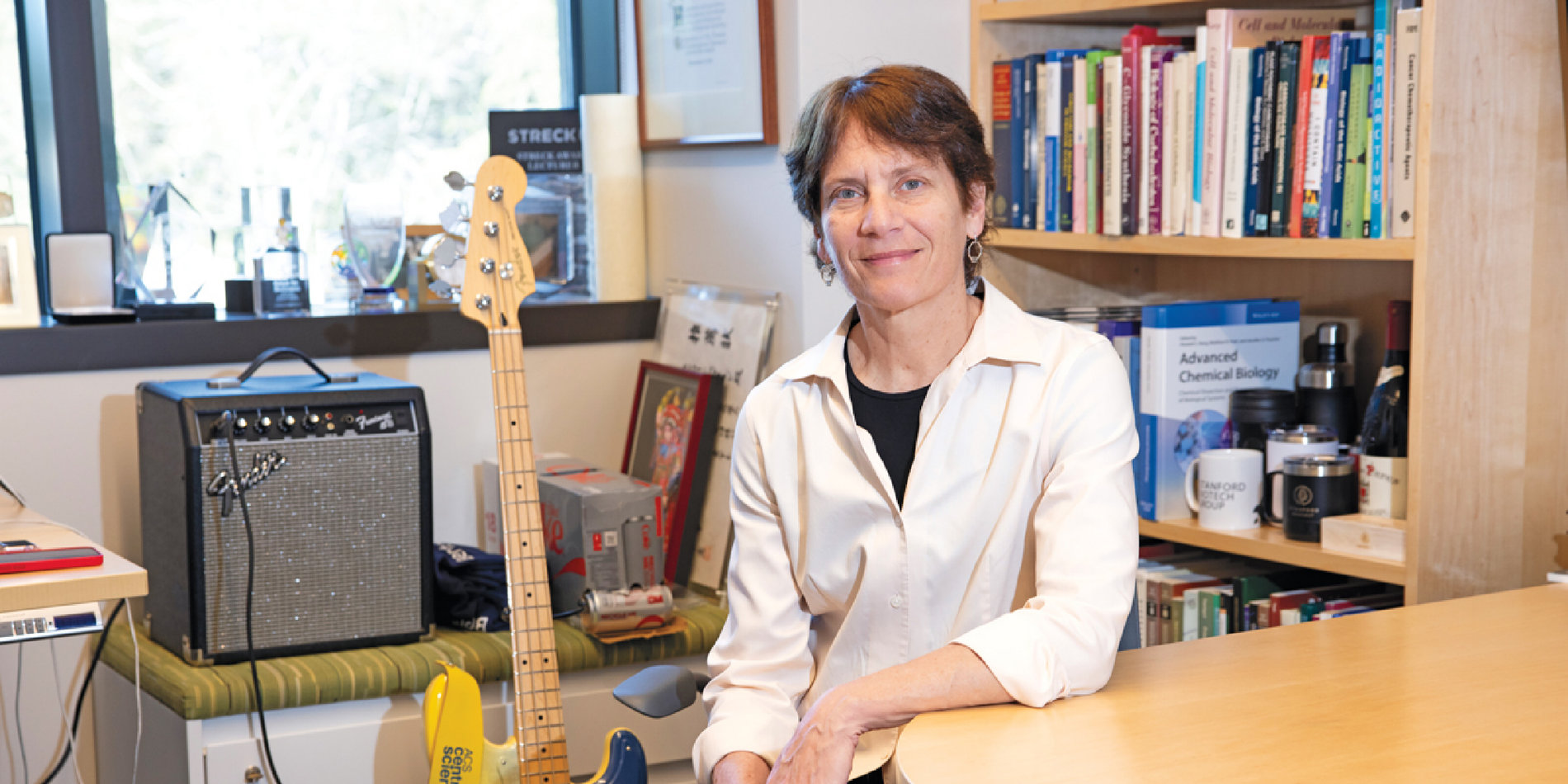Carolyn Bertozzi to join ChEM-H, department of chemistry
Bertozzi said she was inspired by the vision of Stanford ChEM-H, which brings together faculty from chemistry, engineering and medicine with the goal of improving human health.

“Stanford is uniquely situated to create something fundamentally new,” she said. “It has world-class schools and departments in close proximity and is small enough that people can get to know each other across Campus Drive.”
Bertozzi, who is an Investigator of the Howard Hughes Medical Institute, added that faculty within ChEM-H already have a history of collaboration, and this potential will expand as participants move into the planned new building. “Stanford is already known for being a highly collaborative environment across engineering, medicine and the basic sciences,” she added.
"Carolyn is precisely the kind of individual that ChEM-H was established to help bring to Stanford,” said Chaitan Khosla, director of Stanford ChEM-H and professor of chemistry and chemical engineering. “Her wisdom will be invaluable to the ChEM-H mission of educating a cadre of physicians, scientists and engineers who address important problems in human health through their strong grasp of both chemistry and biology."
Bertozzi credits Stanford’s chemistry department in addition to ChEM-H as an important factor in her move. “Stanford has always had a top-notch chemistry department,” Bertozzi said. “Every faculty member is a high-impact, visionary scientist—it is a dream team of superstars.”
“We are very excited to have Carolyn Bertozzi join the chemistry department, both as an inspiring teacher and as an energetic, trailblazing researcher whose background and interests mesh well with multiple areas of the department and with Stanford ChEM-H,” said W.E. Moerner, chair of the chemistry department and the Harry S. Mosher Professor in Chemistry. “We welcome her presence as a transforming force to bridge chemistry with the biology, engineering and medicine communities at Stanford."
Bertozzi is the second faculty member to be inspired to join Stanford by the vision of ChEM-H. Peter Kim, professor of biochemistry, came to Stanford this winter after having spent a decade as the president of Merck Research Laboratories.
“To be able to learn from Peter Kim and Chaitan Khosla is an exciting prospect,” Bertozzi said.
Bertozzi is credited as founding a field called bioorthogonal chemistry, which allows researchers to chemically modify molecules in living cells, including, Bertozzi envisions, cells in human patients in the future. In her own lab, Bertozzi has used bioorthogonal chemistry to image sugars, called glycans, on the surface of cells associated with cancer, to understand how bacterial cell wall structures relate to pathogenesis and to construct novel therapies for cancer. She is also pursuing new avenues for treating tuberculosis and new technologies for detecting cancerous cells.
In 1999 Bertozzi received a MacArthur Prize, and since then she has been elected to the National Academy of Sciences, the Institute of Medicine, and American Academy of Arts and Sciences.
“Carolyn has had enormous impact at the interface between chemistry and the life sciences through the development and application of methods for studying glycans and for performing bioorthogonal chemistries in living systems,” said Khosla, who is also Wells H. Rauser and Harold M. Petiprin professor in the school of engineering.
Through collaborations within ChEM-H, Bertozzi said she’s hoping to bring her work closer to being clinically relevant to people. “My research portfolio has always been influenced by my environment,” she said. “I anticipate that in a new environment we’ll have a new wave of ideas.”
In forming ChEM-H, Khosla hopes to train a new generation of scientists who are fluent in the fields of both chemistry and biology. That idea of creating a new way of training scientists resonated with Bertozzi. “I see the opportunity to create a new kind of training program that positions our students to make giant leaps in therapeutic science,” she said. “We’re going to create a new model for training chemists, engineers and physician-scientists who, themselves, will be primed to revolutionize the way medicines are conceived, created and implemented.”



